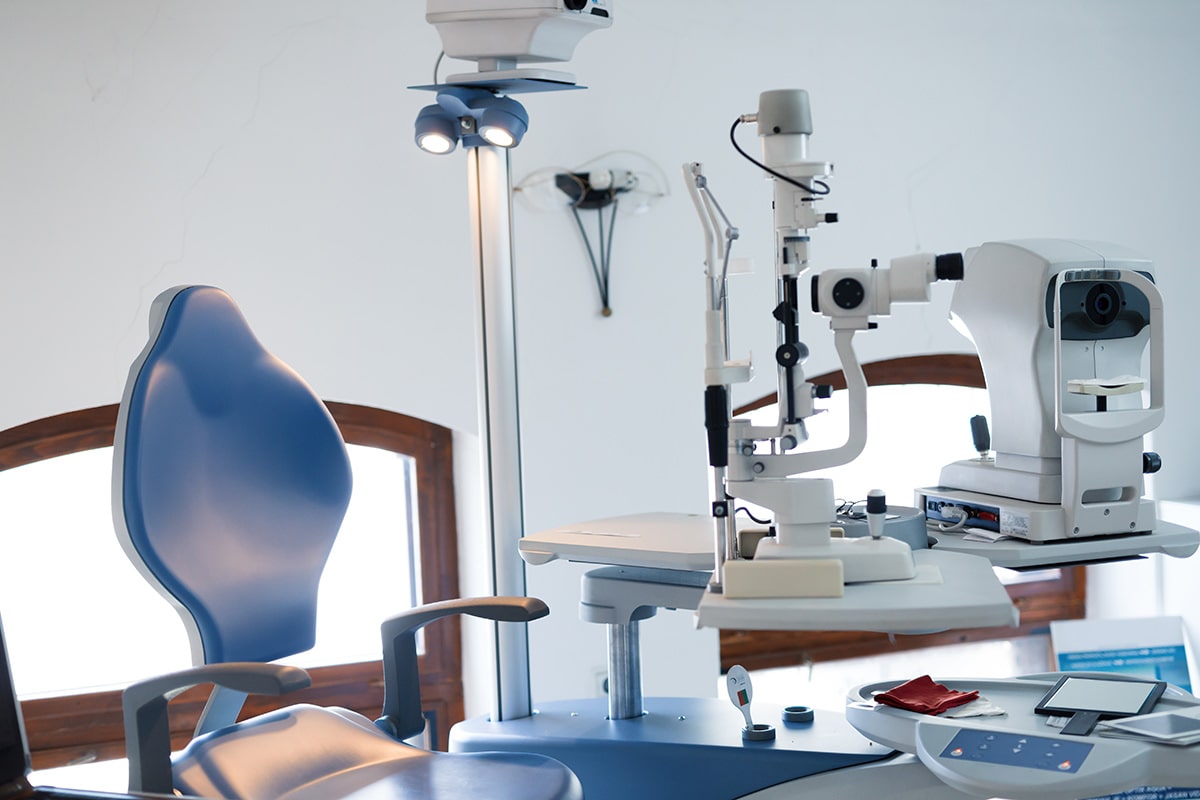What Is LAHayeSIK?
Until now.
Versatility, Precision, and Reliability: The LAHayeSIK Instrument
Over the past decade and a half, LASIK has emerged as one of the safest and most successful surgeries of any variety. Millions of people around the globe have been able to regain their visual independence and reduce or eliminate their reliance on eyeglasses and contact lenses thanks to LASIK. In recent years, wavefront mapping technology has made the procedure even safer and more dependable, allowing the skilled surgeons of Columbus Lasik Vision, our Pennsylvania LASIK center, to provide truly customized treatment. We have been able to provide consistently outstanding results while minimizing incidents of complications and side effects.
Despite the impressive success rates of the LASIK and custom LASIK procedures, all surgeries involve some degree of risk. Even in the case of a surgery with the safety record of LASIK, complications, though rare, can occur. While experienced surgeons, such as those at Columbus Lasik Vision, use the most advanced technology and finely honed surgical skills to ensure the best results possible, the ultimate aim of LASIK researchers and practitioners everywhere is to lower the complication rate to as close to zero as can be achieved.
One particularly promising technology represents a substantial step in the direction of that goal. Named after Leon C. LaHaye, MD, the man behind its development, the LAHayeSIK method could revolutionize the LASIK industry, dramatically lowering the risk of complications and ensuring that more patients will achieve their desired results without the need for retreatment or enhancement.
Indeed, the LAHayeSIK method may one day be integral to laser eye care centers around the nation, but currently Dr. William Columbus is the ONE & ONLY LASIK surgeon in the United States performing LAHayeSIK. So if you are interested in having superior vision without the need for glasses or contacts and you live in or near Pennsylvania, LAHayeSIK and its many benefits are just a few office visits away.
What Is LAHayeSIK?
Regardless of the methods used, LASIK surgery can be divided into two basic stages. The first stage involves the creation of a flap in the surface layer of the cornea. The second stage encompasses everything that occurs between the lifting and the replacement of this flap, including the reshaping of the underlying corneal tissue with an excimer laser.
While much attention has been given to complications that can arise during the first stage of the procedure over the years, it is in the second stage of the procedure that many complications are rooted. This is because the delicate corneal tissue is highly vulnerable to contamination during this stage, which can lead to infection and other issues. While the instruments used to ensure the protection of the eye during LASIK have always been state of the art, there was never a single instrument that could remain in place throughout every maneuver of the second stage, preventing contaminants from entering the surgical field.
Until now.
The LAHayeSIK method entails the use of a single device that performs the functions of multiple instruments, thereby minimizing the risk of contamination and effectively standardizing each part of the second stage of LASIK. The instrument achieves more than ten specialized tasks, giving Dr. Columbus greater control over the procedure than ever before. Indeed, the integration of the LAHayeSIK device into our Pennsylvania custom LASIK practice has led to:
- Shorter procedural times
- Reduced need for secondary procedures
- A ZERO-PERCENT infection rate
- A reduced incidence of side effects and complications
So far, our experience with the LAHayeSIK method has been overwhelmingly positive, and our patients have reaped the rewards.
Versatility, Precision, and Reliability: The LAHayeSIK Instrument
The second stage of LASIK involves a number of maneuvers that must be executed with tremendous precision and skill. The LAHayeSIK instrument facilitates each of these by:
- Isolating and Containing the Surgical Field – Both infectious and non-infectious contaminants are prevented from entering the field of surgery due to the design of the device
- Controlling Eye Movement – The responsibility of having to fix the eyes in a certain position is removed from the patient and shifted to the surgeon, with the aid of the LAHayeSIK handpiece.
- Blocking and Stopping Corneal Bleeding – A chilled wash and ciliary tamponade controls and stops the bleeding that can occur from laser ablation of the cornea.
- Protecting the Corneal Flap – The device protects the cornea from the buildup of contaminating fluids as well as excess hydration.
- Managing Hydration – The devices O2 feature evaporates moisture that could block the laser beam, thereby eliminating the need for sponges and other moisture controlling instruments.
- Removing Surgical Smoke Plumes – The handpiece contains seven ports that remove surgical smoke that might otherwise interfere with the laser beam.
- Irrigating the Surgical Field – Four ports in the handpiece provide controlled irrigation, rinsing and hydrating the cornea as necessary without backwash.
- Providing Instant Aspiration of Debris – Contaminants created by surgery or by the eye itself are instantly removed via aspiration channels.
- Closing the Flap with Unrivalled Precision – The handpiece has a hinged device that allows for precise, clean closure of the corneal flap.
- Aligning the Corneal Flap – The corners of the flap will be aligned exactly with the rest of the upper layer of the cornea, dramatically reducing the possibility of complications arising from the flap healing stage.
- Promoting Rapid Adhesion of the Flap – With the LAHayeSIK device, the corneal flap re-adheres to the eye within 15 seconds, eliminating the need for sponges and other devices during the two to five minutes required for re-adherence in the traditional LASIK procedure.
This is, of course, only a brief overview of the advantages the LAHayeSIK method has to offer over more traditional methods of performing LASIK. To learn more about this revolutionary breakthrough in LASIK technology, we encourage you to contact our Pennsylvania laser eye care center today and visit the LaHayeSik website at www.lahayesik.com for more information.






